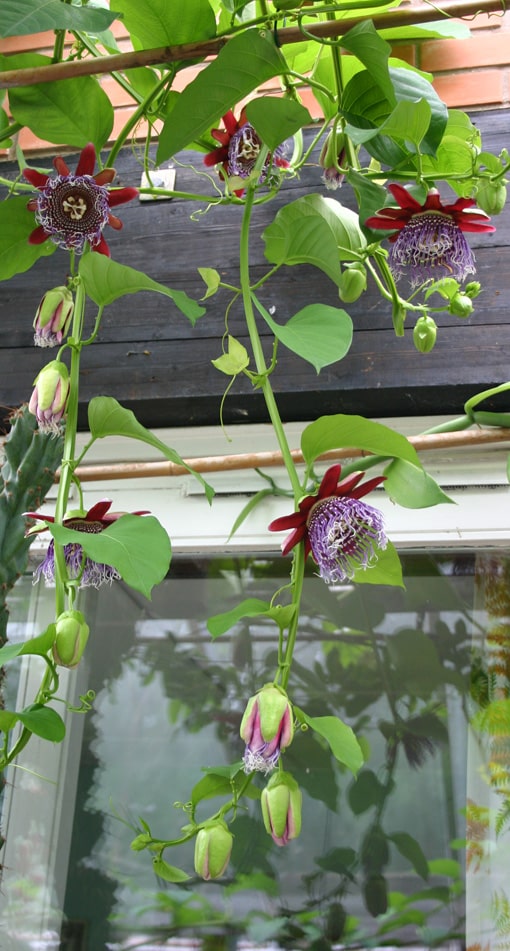Passiflora cultivation

There are species of passion flowers for both the living room, winter garden, and greenhouse in a temperate climate, and some growing information is mentioned under Species for cultivation. In this place a few species are mentioned from the Andes mountains that can be grown outdoors. This is true for the well-known house plant Passiflora caerulea, which is frost resistant to -15℃ and for the species P. incarnate, P. lutea and to some degree P. tucumanensis. Furthermore, P. x colvillii can survive down to -12℃. However, frost resistance demands a well-developed root system, and it usually takes 2-3 years to develop after planting. Therefore, plant in the spring and provide winter covering in the first years. P. caerulea will lose the leaves at -5℃, but the plant will shoot again. Good light and shelter are also necessary.
Species suitable for a climbing frame in the living room besides Passiflora caerulea are P. capsularis, P. gracilis, P. herbertiana, P. morifolia, P. murucuja, P. suberosa, P. allantophylla, P. karwinskii og P. sagasteguii. However, the fruits of these species are not suitable for eating. In dry air and radiator heating it is advisable to shower the plants daily with a spray bottle to keep spider mites away. Pruning may be necessary in particular for the large species mentioned as suitable for winter garden and greenhouse. Pruning is performed in the autumn and/or the spring. Normally, the shoots should not be pruned more than half way back. A mild pruning promotes formation of lateral shoots and developing of flower buds that in most species occur near the shoot tip. P. racemosa is an exception, it flowers from older lignified stems.
Passion flowers thrives best in a well-drained soil which is made slightly acid (pH 6-6.5) by adding some sphagnum (peat moss) and watered with rain water. The plants should be fertilized regularly. A nitrogen rich fertilizer in the spring promotes growth of shoots and leaves, while relatively more phosphor later in the season promotes flowering. P. racemosa needs an extra dose of iron to avoid chlorosis.
Propagation: Germination of fresh seeds of most species demands a wet, preferable sterile soil at 25℃ or more. The meaty and juicy arillus contains germination inhibitory agents, which must be rubbed or washed off e.g. by using sand. In optimal conditions germination happens in 1½-4 weeks. In the first weeks seedlings should be protected with clear plastic bags and showered regularly with a spray bottle. Similar temperature and humidity conditions apply for cuttings, which should be taken from the middle of a shoot. Use 3-4 internodes and cut underneath a node. Remove the lowermost leaf, tendrils and flower buds and reduce the remainder leaves by half. Seeds of different species may in Denmark be bought by B. Højlund: www.bh-froe.com – The photo shows Passiflora x decaisneana grown freely planted in a winter-garden.
H. S. Heide-Jørgensen, March 2011.
Return to Passiflora main page

